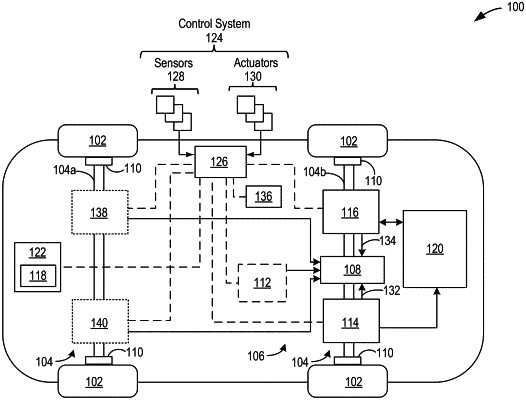| CPC B60L 15/20 (2013.01) [G06F 3/165 (2013.01); H02P 23/0004 (2013.01); B60L 2240/423 (2013.01)] | 17 Claims |

|
1. A method for creating tactile energy in a vehicle system, comprising:
acquiring an audio signal from an audio source;
responsive to acquiring the audio signal, generating a first motor input command for a first traction motor driving a wheel of the vehicle system, wherein the audio signal is processed to generate the first motor input command for the first traction motor when a decibel level of the audio signal is greater than a decibel threshold.
|